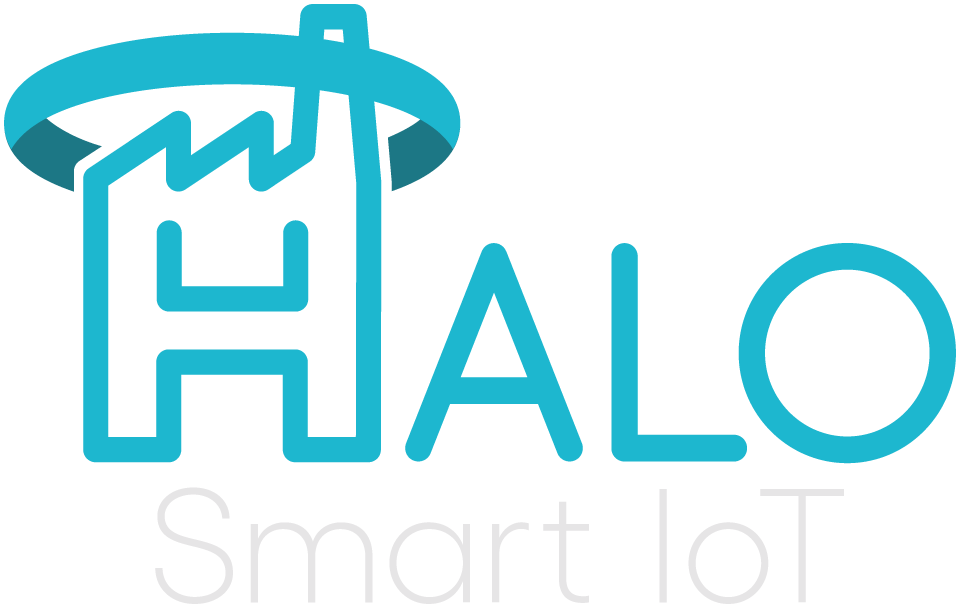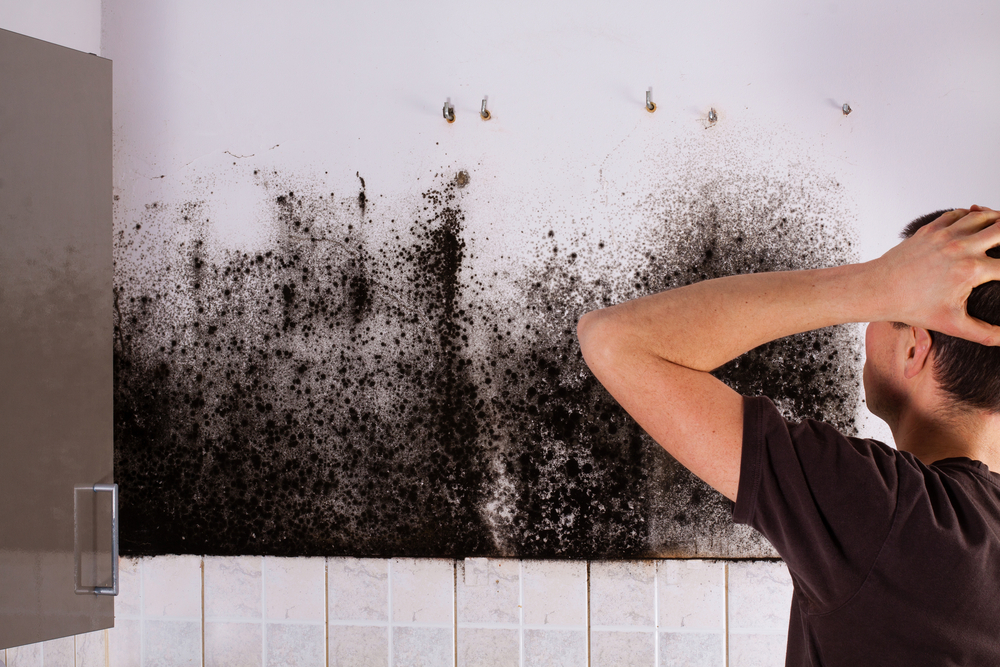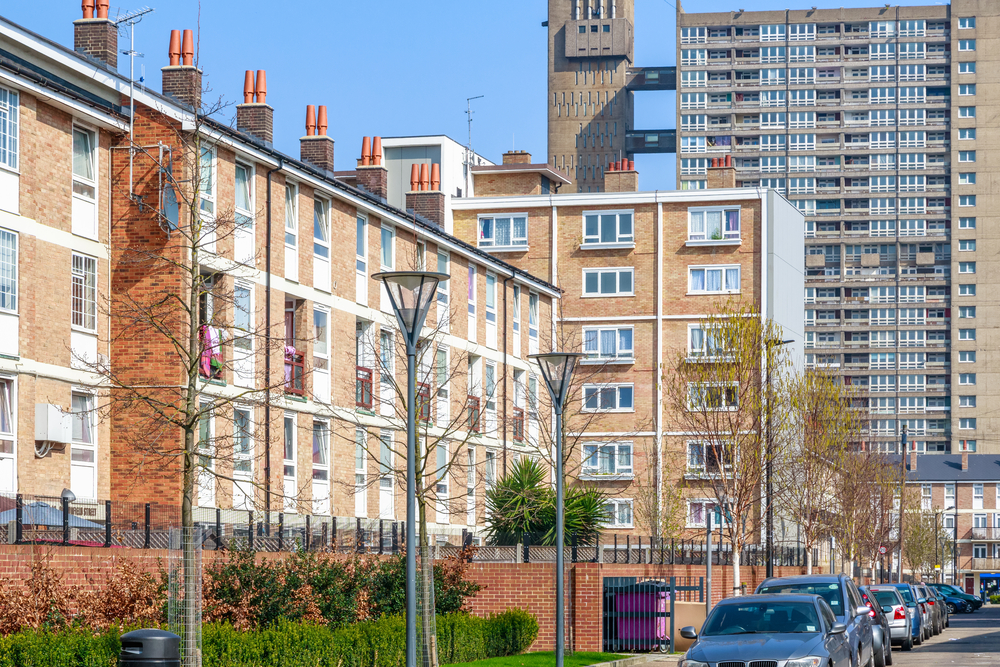Proactive Maintenance is essential in today’s complex building management landscape, where staying ahead of maintenance issues, safety concerns, and regulatory requirements can feel overwhelming. The Halo Smart IoT system offers a comprehensive solution that transforms how facilities are monitored, maintained, and managed. By enabling Proactive Maintenance, the system ensures minimal downtime, optimised asset life, and improved occupant satisfaction. Key Capabilities of Halo Smart IoT These capabilities support Proactive Maintenance by providing timely data and automated alerts that keep your building performing at its best. Comprehensive Environmental Monitoring The Halo Smart IoT system serves as your building’s environmental guardian, with each unit containing different sensors that continuously monitor critical parameters: Comprehensive Environmental Monitoring is a core function of Proactive Maintenance programmes within the system, creating a full picture of your building’s health and enabling decisions that prevent small issues from becoming costly problems. Streamlined Regulatory Compliance Maintaining compliance with UK environmental and safety regulations requires constant vigilance. Halo Smart IoT simplifies this process through: The system’s open architecture allows adaptation to UK-specific compliance standards—such as environmental regulations or fire safety codes—ensuring your building remains compliant with minimal administrative burden. Early Detection of Potential Issues One of the most valuable aspects of the Halo system is its ability to identify problems before they escalate into major incidents: When potential issues are detected, the system can trigger appropriate responses—so you can intervene swiftly and effectively. Enabling Proactive Maintenance Proactive Maintenance transforms your approach to building upkeep through predictive insights: This proactive strategy not only reduces costs but also extends equipment lifespan, improves tenant satisfaction, and enhances HVAC energy efficiency. Real-World Applications Multi-Tenant Properties Property managers overseeing multiple residential or commercial buildings benefit from Halo’s scalable architecture, which enables centralised monitoring across dispersed properties, tailored compliance strategies, energy-efficient automations, and a unified dashboard for portfolio-wide insights. Hospitality Settings Hotels and other venues use Halo Smart IoT to enhance guest experience and safety: air quality monitoring for comfort, smoke detection to deter prohibited activities, motion detection for security, and occupancy data to optimise staffing. Integration Capabilities The Halo Smart IoT system integrates seamlessly with a wide range of devices, enabling property managers to consolidate data from multiple sources into one unified smart building management system. This integration supports IoT building automation and ensures you have a comprehensive view of every aspect of your building’s operation. Enhancing Operational Efficiency Beyond maintenance and compliance, Halo Smart IoT drives operational efficiency through automated responses, real-time alerts, data-driven insights for optimising operations, and remote monitoring capabilities. Facility managers can reduce routine site visits, allocate staff more effectively, and focus on strategic improvements rather than daily troubleshooting. Additionally, the system’s focus on HVAC energy efficiency helps reduce operational costs, improve sustainability, and enhance occupant comfort. Taking the Next Step Implementing a smart building management system is a necessity for forward-thinking property managers. The Halo Smart IoT system offers a comprehensive solution that addresses compliance, enables early detection of potential issues, and facilitates Proactive Maintenance—all while improving operational efficiency and occupant safety. Adopting Proactive Maintenance practices and improving HVAC energy efficiency positions your properties for future success in an increasingly connected world.
Utility Monitoring in Housing for Cost and Energy Savings
The Hidden Potential in Your Housing Projects Housing project managers and developers are under increasing pressure to reduce operational costs while meeting demanding sustainability targets. But what if your buildings could tell you exactly where energy is being wasted—and how to fix it—before the costs spiral? Data-driven Utility Monitoring through IoT is transforming how housing projects are managed, unlocking unprecedented opportunities for cost savings, energy efficiency, and compliance. Here’s how Halo Smart IoT solutions are turning this vision into reality. Why Utility Monitoring Matters in Housing Projects Traditional housing maintenance typically relies on scheduled inspections and reactive responses. This often results in: With building energy management systems powered by IoT, the approach shifts entirely. You gain real-time visibility into your building’s performance, enabling faster decisions, fewer surprises, and smarter investments. Imagine knowing the moment a heating inefficiency begins—instead of realising months later through a costly winter bill. Key Benefits of Halo Smart IoT for Housing Projects and Utility Monitoring 1. Real-Time Performance Monitoring with Utility Monitoring Halo’s platform enables continuous tracking of utilities, delivering better HVAC energy efficiency and overall control. You can: For instance, a spike in usage in a single unit might indicate a faulty sensor or valve, which could go unnoticed until the next scheduled inspection. With real-time alerts, you act immediately. 2. Proactive Maintenance with Leak Detection and Utility Monitoring Using smart home sensors, including water and humidity detectors, Halo identifies potential issues before they escalate. These IoT-enabled tools: A minor bathroom leak might cause thousands in damage if unnoticed. Halo’s leak detection triggers alerts on day one—so you fix a fitting instead of replacing flooring. 3. Simplified Compliance with UK Regulations via Utility Monitoring Meeting environmental and efficiency standards is non-negotiable. Halo supports compliance by: Instead of rushing last-minute to complete sustainability reports, your compliance data is already collected, analysed, and ready to share. Practical Use Across Housing Types and Utility Monitoring Applications Rental Properties Smart technology directly influences tenant satisfaction and operational savings. Key features include: If certain flats are using more energy than expected, property managers can investigate insulation issues or advise tenants on energy-saving behaviour. Public and Shared Areas Communal spaces are notorious for energy waste. Halo transforms their management with: A community centre that once heated empty rooms overnight now adjusts temperatures based on occupancy—saving thousands annually while maintaining comfort. The Financial Impact: Return on Investment with Utility Monitoring The ROI of IoT Utility Monitoring is tangible. Consider these typical outcomes: Most housing developers find that Halo’s system pays for itself within 12 to 24 months. Implementation Tips for Developers in Utility Monitoring Start small and scale smart: Future-Proof Your Housing Stock with Utility Monitoring With predictive analytics, 24/7 monitoring, and integration-ready design, Halo Smart IoT is built for the future. As energy efficiency in housing becomes a priority across the UK, developers with smart infrastructure in place will lead on cost control, compliance, and tenant wellbeing. Take the Next Step in Utility Monitoring Utility Monitoring is more than technology—it’s a shift in how we manage housing. Smarter systems mean better outcomes for developers, tenants, and the planet. Want to know how Halo Smart IoT can improve your housing projects? Get in touch to explore tailored solutions for your properties.
Awaab’s Law: Best Leak, Smoke, and Mould Detection for Homes
Leak, Smoke & Mould Detection Systems for Home Safety Keeping your home safe isn’t just about comfort—it’s about protecting your family’s health and complying with new UK housing standards. After the tragic death of Awaab Ishak, caused by mould exposure in social housing, the UK government introduced Awaab’s Law to set strict requirements on identifying and fixing hazards like damp, mould, and poor indoor air quality. Smart Leak Detection in the UK Leaks can cause structural damage, trigger mould growth, and increase the risk of electrical faults or fire. With HaloSmart IoT’s leak detection system, you get real-time alerts the moment moisture is detected. Strategically placed sensors in kitchens, bathrooms, or utility areas help protect against long-term water damage. Smart leak sensors are particularly vital for legacy assets, where older plumbing may pose unseen risks. In addition to alerting users, our system offers automated responses. Should a leak be detected, the system can automatically shut down appliances or equipment, such as power to a plug, preventing further risk of appliance failure or electrical hazards. For example, if water reaches vulnerable components of an appliance, it could trigger an automatic shutdown to avoid complete failure. Additionally, users can set the system to activate devices like drain pipe valves to mitigate potential damage and help manage the situation in real-time. Best Features: Smart Smoke Detection Systems A fire can spread in seconds—but with smart smoke detection, you gain crucial time to respond. HaloSmart IoT offers smart smoke alarms that provide instant alerts, including remote notifications when you’re not home. These smoke detection systems go beyond the basics—helping UK households meet and exceed fire safety standards. While the alarms are independent and trigger alerts only in their specific location, they are still ideal for multi-level properties and HMO landlords, ensuring comprehensive coverage across the premises. Monitoring Air Quality for Healthier Living Poor indoor air quality has been linked to respiratory problems and long-term health issues, especially for children and elderly residents. With HaloSmart IoT’s air quality monitoring devices, you can continuously monitor harmful pollutants, including volatile organic compounds (VOCs), particulate matter, and humidity levels. These devices represent the best air quality monitors for home use—providing insights to help maintain healthy environments and avoid conditions conducive to mould growth. Benefits include: Smart Integration and Compliance with Awaab’s Law Smart building technologies offered by HaloSmart IoT support early hazard detection and proactive intervention. This aligns closely with Awaab’s Law, which demands faster response times and greater transparency from landlords. Using property monitoring solutions to track leak alerts, smoke events, and air quality trends means hazards can be addressed before they escalate. For landlords, this ensures readiness for upcoming regulation phases—from October 2025 to full HHSRS alignment by 2027. Integrated benefits: Secure Your Home Now—Before It Becomes a Legal Requirement Awaab’s Law may currently focus on social landlords, but its principles are a wake-up call for all homeowners and landlords across the UK. Adopting smart home sensors like those from HaloSmart IoT allows you to stay ahead of legislation and prioritise health and safety. With smart leak detection, smoke alarms, and the most accurate air quality monitors, you’re not just complying with emerging standards—you’re protecting what matters most: your home and your family. e and your family.
Real-time Monitoring and Alerts: Creating Safer, Smarter Homes in the UK
Have you ever wondered if your home could do more to protect your family and belongings? Modern smart home technology now makes it possible to monitor everything from energy use to environmental conditions—all through intelligent, real-time monitoring. With the UK’s smart home adoption rate currently at 39% and projected to reach 50% by 2027, more homeowners are discovering the peace of mind that comes with staying connected to their living spaces. How Real-time Monitoring Transforms Home Safety Real-time monitoring systems can revolutionise how you manage the safety and efficiency of your home. By delivering instant alerts and valuable insights, these systems empower homeowners to respond quickly preventing small issues from becoming big problems. Key Components of Smart Home Monitoring Smart Energy Management Halo Smart IoT offers real-time tracking of energy usage across the home, helping identify appliances that consume excessive power and enabling users to optimise their consumption. This proactive approach to energy management supports more efficient use of resources, reduces costs, and encourages smarter, more sustainable choices. Whether you’re focused on lowering bills or reducing your carbon footprint, intelligent energy management is key to a smarter home. Air Quality Monitoring Halo Smart IoT’s air quality sensors monitor a wide range of indoor elements, including CO₂, dust, disinfectant residues, and other pollutants. Users receive real-time notifications when levels move beyond recommended thresholds, enabling timely action to address air quality concerns. Depending on the setup, the system can also trigger a response through another device within the same system. This ensures greater awareness and control over indoor conditions, supporting healthier environments and helping maintain standards for occupant wellbeing. Safety Support Features Halo Smart IoT includes a device that can function as a panic button. This device, when activated, can notify designated contacts or sound an alarm—supporting personal safety in the home, particularly for elderly or vulnerable individuals. It offers reassurance by making it easy to call for help in an emergency or unsafe situation. The straightforward design ensures it can be used quickly and confidently, helping individuals feel secure knowing assistance is just a button press away. Creating Energy-Efficient, Healthier Living Environments Smart home technology enhances safety and efficiency. With tools like: Getting Started with Real-time Home Monitoring Turning your house into a smarter, safer home doesn’t need to be overwhelming. Many starts with a single solution—like air quality sensors or energy monitors—and build from there. With Halo Smart IoT, you’re connected to what matters most: the wellbeing of your home and loved ones. Real-time alerts and intelligent monitoring can help you prevent emergencies, reduce energy waste, and maintain a healthier living environment.
Why Smart smoke detectors Are Essential for Every Property
Traditional smoke detectors are limited in their ability to accurately detect fire hazards. They often trigger false alarms in response to harmless sources like cooking steam or shower vapour. This not only causes unnecessary disruption but can also lead to complacency—where occupants begin to ignore alarms, potentially putting lives at risk. To address these challenges, the Smoke Sensor by HaloSmartIoT provides a smarter, more reliable approach to smoke detection, tailored to meet the evolving needs of modern homes and buildings. Reliable, Early Fire Detection The Smoke Sensor is designed to give an early warning of developing fires by detecting smoke and activating a powerful, built-in siren. Its quick-response capabilities offer critical extra minutes for evacuation, which can be the difference between a safe escape and a dangerous situation. With a simple clip-in ceiling bracket and low power consumption, it’s also easy to install and maintain—making it an ideal choice for both new builds and retrofit projects. Smart Monitoring, Centralised Control Unlike standalone detectors, the Smoke Sensor integrates seamlessly with HaloSmartIoT’s cloud-based platform. When connected with other devices in the system, it enables centralised monitoring and management from a single dashboard. Whether managing one property or an entire portfolio, estate and facility managers can monitor smoke detection events in real time, receive instant alerts, and track performance trends across multiple sites. mart Monitoring, Centralised Control Unlike standalone detectors, the Smoke Sensor integrates seamlessly with HaloSmartIoT’s cloud-based platform. When connected with other devices in the system, it enables centralised monitoring and management from a single dashboard. Whether managing one property or an entire portfolio, estate and facility managers can monitor smoke detection events in real time, receive instant alerts, and track performance trends across multiple sites. The Smoke Sensor also enables real-time fire event reporting, ensuring swift alerts and accurate incident tracking across all connected properties. This level of control not only improves responsiveness in emergency situations but also enables proactive maintenance—reducing downtime and preventing costly false alarms. Alerts can be customised to suit specific building needs and routed to responsible personnel for rapid action. Supports UK Fire Safety Regulations The Smoke Sensor helps property managers meet and exceed UK fire safety standards. Under the Smoke and Carbon Monoxide Alarm (Amendment) Regulations 2022, all rented residential properties in England must have working smoke alarms installed on each floor. HaloSmartIoT’s solution supports full compliance with these requirements, giving landlords confidence in their legal obligations while potentially reducing insurance premiums. For housing providers, student accommodations, and commercial buildings, the smart system ensures that smoke detection is not just compliant but optimised for real-world conditions. Privacy-First Design In shared or sensitive spaces, privacy is a key consideration. Traditional monitoring systems that rely on cameras or audio sensors may be seen as intrusive. The Smoke Sensor respects user privacy by design—it contains no cameras, no microphones, and does not collect personally identifiable information. This makes it a trusted solution for use in bedrooms, bathrooms, care facilities, and other environments where discretion is essential. Scalable and Future-Ready The Smoke Sensor is part of a broader ecosystem of HaloSmartIoT devices. With support for unlimited device connections and an open API, it can be integrated with building management systems or smart home platforms to trigger automation workflows—such as activating ventilation, turning on emergency lighting, or sending alerts to building security. Whether managing a single flat or a multi-building estate, the system is built to scale, offering long-term flexibility and resilience. Better Protection Starts with Smarter Detection By replacing outdated smoke alarms with smart sensors, property owners and facility managers can drastically improve safety, streamline compliance, and minimise disruptions. The Smoke Sensor from HaloSmartIoT combines powerful early warning capabilities with real-time monitoring and privacy-first design—offering peace of mind for both residents and managers alike.
How Smart Buildings are Redefining the Future of Monitoring
Ever wondered how modern buildings seem to anticipate your needs before you even express them? The answer lies in the revolutionary fusion of smart building technologies and Internet of Things (IoT) systems that are fundamentally transforming how we monitor, manage, and experience our built environments. The Evolution of Building Intelligence Traditional building management systems relied on manual checks, scheduled maintenance, and reactive problem-solving. Today, smart buildings leverage interconnected IoT devices to create living, breathing structures that continuously gather data, learn patterns, and make autonomous decisions to optimise performance. Core Components of Smart Building Monitoring Building Management Systems (BMS) At the heart of every smart building is a central Building Management System that serves as the brain coordinating all operations. Modern BMS platforms have evolved from simple control systems to sophisticated hubs that integrate with IoT sensors and AI algorithms to automate HVAC, lighting, security, and more. Think of the BMS as the building’s central nervous system—processing inputs, making decisions, and sending signals to various subsystems to maintain optimal performance. Like a skilled orchestra conductor, the BMS ensures all building systems work in perfect harmony. IoT Sensor Networks The nervous system of smart buildings consists of distributed sensor networks that monitor: These sensors provide the continuous data stream that enables real-time monitoring and adjustments. In a typical office building, hundreds or even thousands of sensors might be silently working to create the perfect environment while remaining virtually invisible to occupants. Cloud-Based Analytics The massive data generated by sensor networks is processed through cloud-based analytics platforms that transform raw information into actionable intelligence. These systems can identify patterns invisible to human operators and enable predictive capabilities that fundamentally change building management. For instance, by analysing historical occupancy data alongside calendar information, weather patterns, and seasonal trends, these systems can accurately predict building usage weeks in advance, optimising energy consumption without sacrificing comfort. How IoT is Transforming Building Monitoring Real-Time Responsiveness IoT-enabled monitoring systems have eliminated the delay between event detection and response. When sensors detect changes in occupancy, weather conditions, or equipment performance, the building can automatically adjust without human intervention. For example, when meeting rooms empty out earlier than scheduled, smart systems can immediately adjust lighting, HVAC settings, and security parameters—saving energy and optimising resources in real-time. This instantaneous responsiveness creates buildings that feel almost intuitive, adapting to users’ needs moment by moment. Imagine arriving at your office on an unexpectedly hot day—before you even reach for the thermostat, the building has already detected the temperature anomaly and adjusted cooling systems to maintain comfort levels, all while optimising energy usage based on occupancy predictions for the day. Predictive Maintenance Perhaps the most significant transformation is the shift from reactive to predictive maintenance. AI algorithms analyse sensor data to forecast equipment failures before they occur, enabling maintenance teams to address issues before they cause disruptions. AI-driven predictive maintenance can reduce equipment downtime by up to 50% and extend machine life by years, dramatically reducing operational costs. Energy Optimisation Smart buildings are redefining energy efficiency through continuous monitoring and adjustment. AI-powered HVAC systems can reduce energy consumption by 15-25% while cutting carbon emissions by approximately 19%. These systems analyse occupancy patterns, weather forecasts, and building thermal characteristics to optimise energy use without compromising comfort. Unlike traditional systems that operate on fixed schedules, smart buildings can intelligently pre-cool or pre-heat spaces based on predicted occupancy, external temperature trends, and even individual preference data. Integrated Security Monitoring IoT has enabled a holistic approach to security monitoring that combines physical and digital protection. Modern systems integrate: This comprehensive approach provides unprecedented protection for building assets and occupants. The Economic and Environmental Impact The transformation of building monitoring systems through IoT technology isn’t just a technological achievement—it’s an economic and environmental imperative. The AI smart building market is projected to reach $177.1 billion by 2031, growing at an impressive 23.9% annually. This growth reflects the substantial ROI that smart building technologies deliver through: For a typical 100,000 square foot commercial building, these benefits can translate to annual savings of $0.20-0.40 per square foot in energy costs alone, with additional savings in maintenance and operations creating a compelling business case for investment in smart technologies. Beyond the financial benefits, smart buildings play a crucial role in addressing climate change. With buildings accounting for approximately 40% of global energy consumption and carbon emissions, the widespread adoption of IoT-enabled efficiency measures represents one of our most powerful tools for meeting ambitious climate goals. Future Trends in Smart Building Monitoring Adaptive Intelligence Future buildings will feature truly adaptive intelligence that allows structures to “learn” from occupant behaviors and environmental conditions. These systems will continuously optimise operations to improve efficiency and occupant experiences without human programming. Imagine a building that recognises when a particular team tends to work late on Tuesdays and automatically adjusts lighting, temperature, and security settings for their preferred areas—without anyone having to program these preferences. This level of customisation and adaptation will transform occupant experiences while further optimising resource usage. Sustainability Integration By 2030, smart buildings will increasingly integrate with smart grids and renewable energy sources to achieve energy neutrality or even positive energy status. IoT monitoring systems will orchestrate this complex dance between energy generation, storage, and consumption. Buildings will become active participants in the broader energy ecosystem, intelligently scheduling energy-intensive activities during periods of renewable abundance, storing excess energy in batteries or thermal mass, and even serving as distributed energy resources for the surrounding community during peak demand periods. Enhanced Occupant Experience The ultimate goal of smart building monitoring extends beyond operational efficiency to creating environments that enhance human wellbeing and productivity. Future systems will monitor and optimiSe air quality, lighting, acoustics, and thermal comfort to support occupant health and cognitive function. Research increasingly shows that optimised indoor environments can boost cognitive performance by 8-11% while reducing sick days and increasing overall wellbeing. Smart buildings will leverage this knowledge, using IoT sensors to continuously monitor and adjust environmental parameters to support human performance. Implementing Smart
Early Leak Detection for Unbeatable Property Protection
Leak detection is essential. Did you know that water damage claims in the UK typically range between £1,000 and £5,000 per incident? Even a small, undetected leak can quickly turn into a major household issue—causing structural damage, mould growth, and major disruption to everyday life. Much like a single dripping tap can fill a bathtub overnight, ignoring early warning signs can lead to costly and emotionally draining consequences. Introducing the Halo Smart IoT Sensor The Halo Smart IoT devices are designed to protect your home through early leak and flood detection. Unlike traditional water alarms that only activate once wet, this multi-functional sensor offers intelligent, proactive protection—while respecting your privacy. Advanced Water Leak Detection You Can Trust The Halo Smart IoT Sensor continuously monitors your home for signs of water leaks, sending real-time alerts directly to your smartphone when issues are detected. This immediate notification system allows you to act quickly—whether you’re asleep, at work, or away on holiday—helping to prevent extensive damage before it begins. Whole-Home Coverage Made Simple Water leaks can happen anywhere: under sinks, behind appliances, or in hidden corners of the home. The Halo Smart IoT’s expandable sensor network ensures no vulnerable area is left unprotected: With battery-powered sensors, installation is quick and wire-free—even in hard-to-reach areas where traditional systems fall short. Beyond Leaks: A Complete Smart Monitoring Solution The Halo Smart IoT Sensor goes further than just detecting water. It also monitors: By detecting rising humidity or hidden issues within walls, helps prevent mould growth and long-term structural damage—creating a healthier, safer living space. Cost Savings for UK Homeowners Installing the Halo Smart IoT Sensor can deliver meaningful financial benefits: Smart Home Integration, Seamlessly Delivered The Halo Smart IoT Sensor integrates smoothly with your existing smart home setup. It can also connect to HVAC systems to optimise airflow in moisture-prone spaces, further reducing the risk of damp and mould. This compatibility ensures that you’re enhancing your current smart home investment—not replacing it. Protect Your Property Today Water damage is one of the most common—and costly—home insurance claims in the UK. The Halo Smart IoT Sensor offers a proactive, connected solution that detects problems at the earliest possible stage, giving you peace of mind and protecting your most valuable asset. Don’t wait for a leak to cause chaos. Protect your home with Halo today—before a drip becomes a disaster.
Ensuring Mould-Free Residential Buildings: A Vital Step for Tenant Protection and Comfort
Mould growth in residential buildings is a significant concern for landlords, housing providers, and tenants alike. Left unchecked, it can lead to serious health risks, costly property damage, and legal challenges for landlords. With growing awareness of indoor air quality and tenant well-being, it has become essential for property managers to adopt proactive solutions to prevent mould formation. This is where Halo Smart IoT comes in. By leveraging real-time monitoring and smart technology, landlords and housing providers can maintain mould-free, safe, and comfortable homes while ensuring compliance with housing regulations. The Impact of Mould in Residential Buildings Mould is more than just an aesthetic issue—it poses significant health and financial risks. Health Risks to Tenants Exposure to mould can trigger respiratory issues, allergies, and long-term health problems, particularly for: The presence of mould often correlates with high humidity and poor ventilation, creating an unhealthy living environment. If left untreated, tenants may experience chronic coughing, skin irritation, nasal congestion, and other respiratory symptoms. Property Damage and Costly Repairs Mould can weaken walls, ceilings, and floors, leading to structural damage and expensive repairs. The longer it goes unnoticed, the more extensive (and costly) the damage becomes. A minor condensation issue can quickly escalate into: Beyond repair costs, properties with a mould problem become difficult to let, resulting in lost rental income and dissatisfied tenants. Legal and Compliance Challenges With increasing regulations around housing standards, landlords and housing providers must ensure safe, habitable conditions for tenants. Under the Homes (Fitness for Human Habitation) Act 2018, landlords are legally obligated to maintain properties free from hazards, including excessive damp and mould. Failure to do so can result in legal disputes, fines, and reputational damage. Proactively Preventing Mould with Halo Smart IoT Traditional mould prevention methods—such as periodic inspections—are often reactive and ineffective. By the time visible signs of mould appear, the damage is already done. With Halo Smart IoT, landlords can implement a proactive, technology-driven approach to keeping buildings mould-free. 1. Real-Time Humidity and Temperature Monitoring Mould thrives in humid, poorly ventilated conditions. With Halo Smart IoT humidity and temperature sensors, property managers can monitor conditions in real time and receive alerts if humidity levels exceed safe thresholds. By continuously tracking these factors, landlords can take corrective action before mould develops. 2. Identifying High-Risk Areas Not all rooms are equally vulnerable to mould. Bathrooms, kitchens, and poorly insulated areas are particularly susceptible. Halo Smart IoT sensors can be placed in high-risk areas to detect early signs of excessive moisture, helping property managers focus their efforts where it matters most. 3. Smart Ventilation Control Good ventilation is crucial in mould prevention. With IoT-powered ventilation control, property managers can: This reduces the likelihood of moisture build-up, keeping properties dry and mould-free. 4. Preventing Structural Damage High humidity levels don’t just lead to mould—they also contribute to damp and rot in walls and flooring. By integrating IoT monitoring with predictive maintenance, property managers can detect potential issues early and schedule preventive maintenance before structural damage occurs. 5. Ensuring Compliance with Housing Regulations By actively monitoring indoor conditions, landlords can demonstrate compliance with housing health and safety standards. The Halo Smart IoT system provides data logs and reports that serve as proof of compliance, reducing legal risks and protecting landlords from potential disputes. Cost Savings for Landlords and Housing Providers Reducing Repair Costs Preventing mould with IoT monitoring is significantly cheaper than carrying out major repairs once damage has occurred. Addressing a minor condensation issue early can prevent thousands of pounds in structural repair costs. Lowering Energy Bills Mould often forms in cold, damp properties with poor insulation. By monitoring temperature variations and energy efficiency, property managers can identify inefficiencies in heating and insulation, helping to lower energy costs for both landlords and tenants. Minimising Tenant Complaints and Turnover A mould-free property leads to happier tenants and longer lease agreements. Dissatisfied tenants facing recurring damp issues are more likely to seek alternative accommodation, leading to costly vacancies and re-letting fees. Halo Smart IoT helps create a comfortable, healthy living environment, improving tenant retention. Future-Proofing Residential Buildings with Smart IoT As the housing sector shifts towards smarter, more sustainable property management, Halo Smart IoT offers a cutting-edge solution to mould prevention. By leveraging real-time data, predictive analytics, and smart automation, landlords and housing providers can ensure safer, healthier homes while reducing maintenance costs. For housing providers looking to adopt IoT-powered mould prevention, our team at Halo Smart IoT is ready to assist. Contact us today to discover how our technology can help you protect your properties, reduce costs, and enhance tenant well-being.
Cost Savings with Predictive Maintenance in Residential Tenanted Properties
Managing residential tenanted properties can be a complex and costly task, particularly when it comes to maintenance and repairs. Traditional reactive maintenance—where landlords and property managers only address issues once they become critical—can lead to unexpected expenses, tenant dissatisfaction, and prolonged property damage. However, with the advent of predictive maintenance powered by Halo Smart IoT, landlords and housing providers can save costs, improve efficiency, and enhance tenant satisfaction by identifying and addressing issues before they escalate. What is Predictive Maintenance? Predictive maintenance leverages real-time monitoring and data analytics to foresee potential issues in a property’s infrastructure, enabling landlords to take preventive action before problems worsen. By integrating smart sensors and IoT technology, predictive maintenance can monitor critical aspects of a property, such as: Instead of relying on routine inspections or waiting for tenants to report faults, predictive maintenance uses real-time data from Halo Smart IoT devices to provide insights into a property’s condition, allowing landlords and housing providers to reduce costly emergency repairs and optimise maintenance schedules. How Predictive Maintenance Reduces Costs 1. Preventing Expensive Repairs Reactive maintenance often results in costly emergency call-outs and major repairs. For example, a boiler failure in winter can lead to urgent repair costs and tenant complaints. However, with Halo Smart IoT’s predictive monitoring, landlords can detect early warning signs—such as fluctuating temperatures or inefficiencies in heating systems—allowing for planned maintenance at a lower cost before total failure occurs. Similarly, damp and mold issues, which often arise due to poor ventilation and excess humidity, can be prevented with IoT monitoring. Humidity and CO2 sensors can alert property managers to poor ventilation conditions, enabling timely interventions such as adjusting airflow, repairing insulation, or installing dehumidifiers before structural damage and health risks emerge. 2. Reducing Tenant Turnover and Complaints Property management costs aren’t just about repairs—tenant dissatisfaction due to poor maintenance can lead to higher tenant turnover, resulting in additional costs for marketing, vacant property losses, and re-letting fees. By using predictive maintenance, landlords can ensure properties remain in optimal condition, keeping tenants happy and reducing costly vacancies. For example, heating system inefficiencies are a frequent source of complaints during colder months. With Halo Smart IoT, landlords receive alerts on temperature fluctuations, ensuring that heating issues are addressed before they impact tenant comfort. Proactive maintenance builds trust between landlords and tenants, encouraging longer tenancies and reducing turnover costs. 3. Lowering Energy Bills and Operational Costs Energy efficiency is a major concern for both landlords and tenants. A property with inefficient insulation, faulty heating, or high energy wastage leads to higher energy bills, creating financial strain for both tenants and housing providers. By integrating smart energy monitoring with Halo Smart IoT, property managers can track energy consumption in real-time and identify areas of waste. For instance, if an IoT sensor detects excessive energy use in a vacant property, this could indicate faulty equipment or unnecessary heating usage. These insights enable landlords to make data-driven decisions to optimise energy efficiency, such as: This not only leads to cost savings for landlords but also supports tenants in reducing their energy bills, contributing to improved affordability and tenant satisfaction. 4. Extending Asset Lifespan Predictive maintenance isn’t just about preventing breakdowns—it’s also about prolonging the lifespan of property assets such as boilers, radiators, and ventilation systems. Regular monitoring of temperature fluctuations, water pressure, and energy usage allows property managers to schedule maintenance at optimal intervals, preventing wear and tear and extending the useful life of key property assets. For instance, a boiler that runs inefficiently due to high limescale buildup will consume more energy and eventually fail prematurely. IoT sensors can track performance trends and alert landlords to the need for routine servicing before major issues arise. By keeping appliances and systems well-maintained, landlords avoid premature replacements and save thousands of pounds in capital expenditures. Halo Smart IoT: The Future of Cost-Effective Property Management The Halo Smart IoT system provides a complete solution for property managers looking to reduce maintenance costs while ensuring safe, energy-efficient homes for tenants. By leveraging real-time data and advanced analytics, the system empowers landlords to prevent costly repairs, optimise energy usage, reduce tenant complaints, and extend the lifespan of property assets. By transitioning from reactive maintenance to predictive maintenance, landlords and housing providers can achieve significant cost savings while improving the overall quality of housing stock. The future of residential property management is smart, data-driven, and proactive—and Halo Smart IoT is leading the way. For landlords and housing providers looking to cut maintenance costs and improve efficiency, our team at Halo Smart IoT is ready to assist. Contact us today to learn how smart technology can transform your property management strategy and save you thousands in unnecessary expenses.
The Role of IoT in Estate Management: A Smart Approach
Estate management has traditionally been a labour-intensive process, requiring continuous monitoring, maintenance, and administrative oversight. However, the rise of the Internet of Things (IoT) is transforming the way estates are managed, offering enhanced efficiency, cost savings, and improved tenant experiences. Understanding IoT in Estate Management IoT refers to a network of interconnected devices and sensors that collect and transmit data in real time. In estate management, these technologies provide valuable insights into property conditions, energy usage, and maintenance needs, allowing estate managers to make data-driven decisions that enhance efficiency and sustainability. Key Applications of IoT in Estate Management 1. Smart Building Monitoring IoT-enabled sensors continuously track vital building metrics such as temperature, humidity, lighting, and energy consumption. By integrating these insights into a centralised platform, estate managers can proactively address maintenance issues, optimise energy usage, and ensure tenant comfort. 2. Predictive Maintenance and Cost Reduction Traditional maintenance strategies often rely on scheduled inspections or reactive responses to breakdowns. IoT-driven predictive maintenance, however, uses sensor data to detect early signs of wear and tear, allowing for timely repairs before failures occur. This reduces downtime, minimises repair costs, and extends the lifespan of building assets. 3. Enhanced Security and Safety Smart security systems, including IoT-enabled cameras, access control, and motion sensors, enhance estate security by providing real-time surveillance and automated alerts. Additionally, IoT can improve fire safety by monitoring smoke and carbon monoxide levels, ensuring rapid response in emergencies. 4. Data-Driven Decision Making With IoT, estate managers can access detailed analytics on building performance, energy consumption, and tenant behaviour. This data-driven approach allows for more informed decision-making, enabling better resource allocation and operational efficiencies. The Future of Smart Estates As IoT technology continues to evolve, estate management will become more automated, efficient, and sustainable. The integration of artificial intelligence, machine learning, and blockchain technology will further enhance decision-making, security, and operational transparency. Embracing IoT-driven estate management solutions now will enable property owners and managers to future-proof their estates, enhance tenant satisfaction, and achieve significant cost savings. In an era where efficiency and sustainability are paramount, IoT is the key to smarter estate management.










